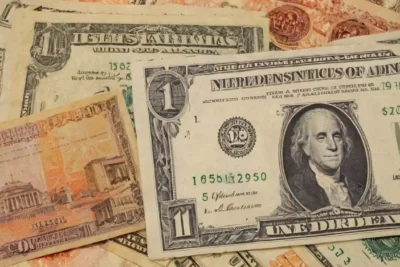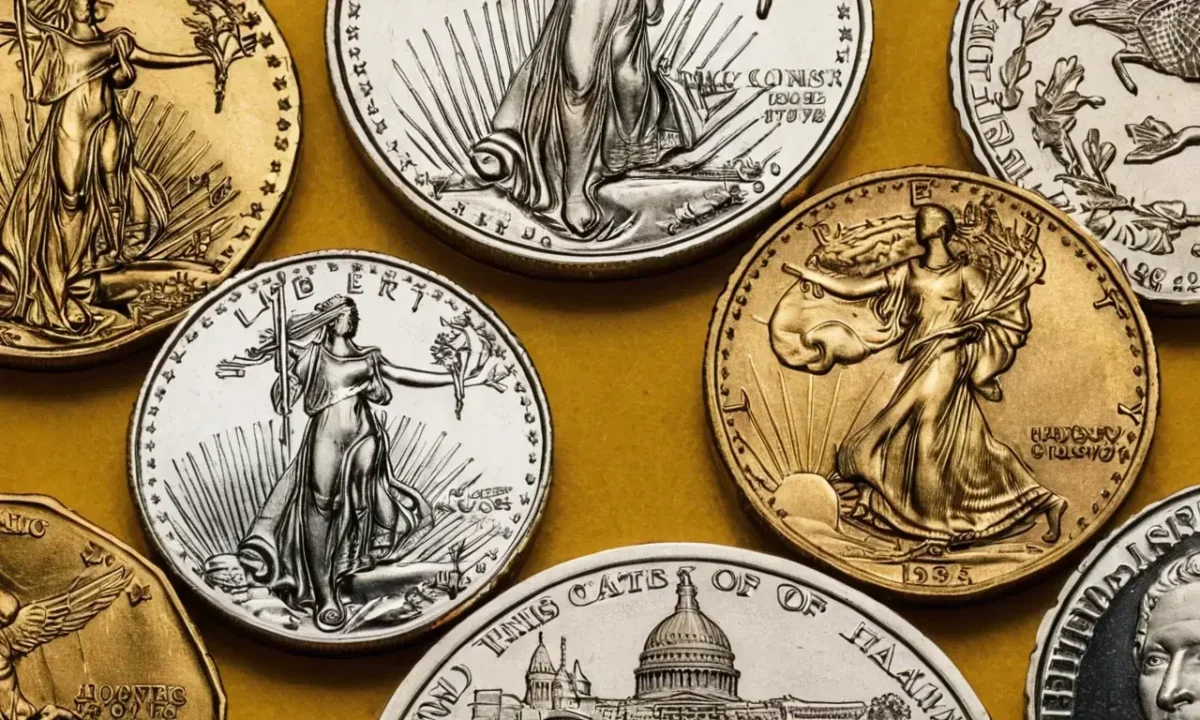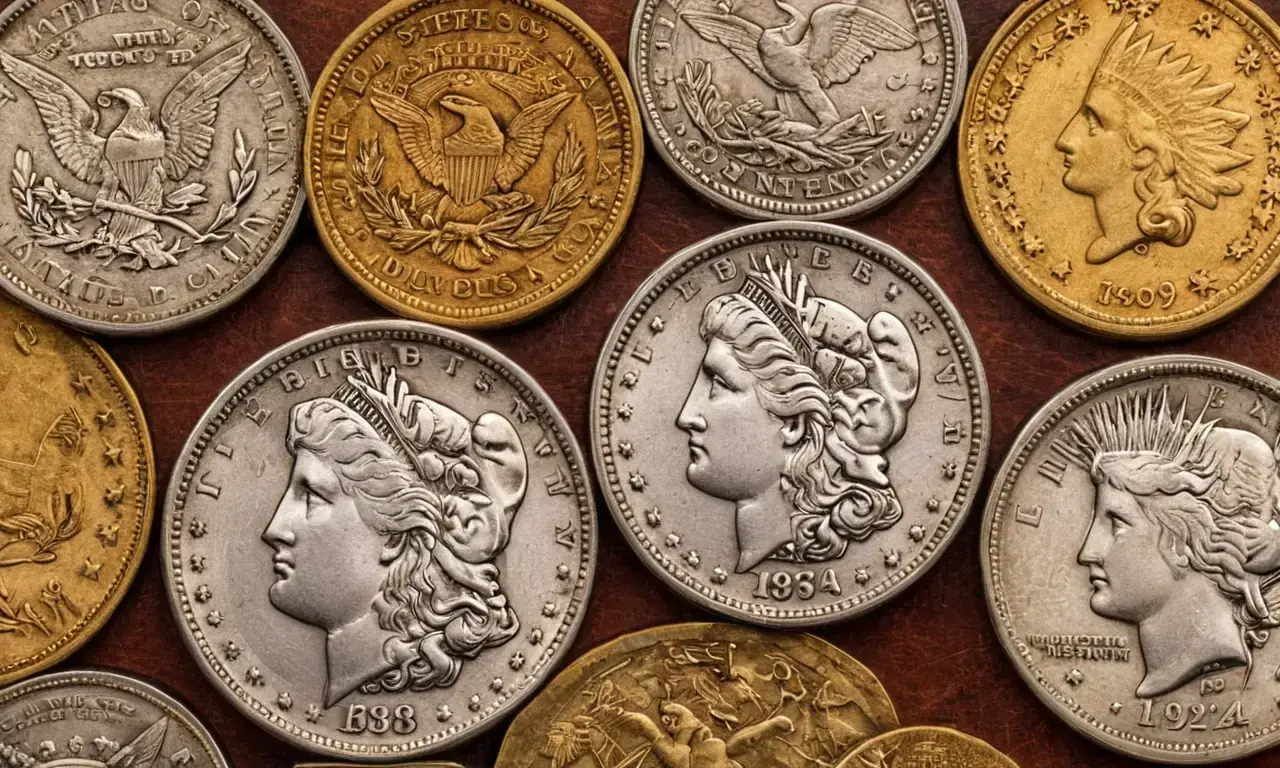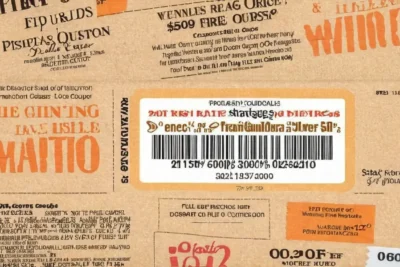
US Coinage System: A Quirky Tradition of Word Values

The United States coinage system is one of the most recognizable and widely used monetary systems globally. However, a peculiar aspect of this system has garnered attention over the years - its use of words instead of numbers to denote coins numbers on its coins. From the "One Cent" on the penny to the "Quarter Dollar" on the quarter, this tradition seems to defy logic in an era where numerical values are the norm. Despite being a part of everyday life for Americans, the reasons behind this unique approach remain unclear.
This article aims to delve into the intricacies of the US coinage system, exploring its history, the reasoning behind using words instead of numbers, and how it affects both domestic and international users. We will examine various theories on why numerical values are not used, discuss the cultural significance of these coins, and compare this system with those of other countries.
- History of US Coinage System
- Unique Features of US Coins
- Why Numerical Values Are Not Used
- Tradition Behind Word Values
- Metal Content and Coin Denominations
- Federal Law and Design Requirements
- Impact on Non-English Speakers
- Cultural Significance of US Coinage
- Evolution Over Time
- Comparison with Other Countries
- Conclusion
History of US Coinage System
The history of the US coinage system dates back to 1792 when the Coinage Act was passed, establishing the United States Mint. This act laid the groundwork for the production of coins that would eventually become a staple in American currency. Over time, as the country grew and its economy evolved, so did the design and composition of its coins.
The early US coins were primarily made from precious metals such as gold and silver, with their values directly tied to these metals' worth. This direct correlation between metal content and coin value led to a system where words were used to describe the coins rather than numerical values. For instance, the "Half Dime" was a coin that contained half the amount of silver found in a dime but was not labeled as such; instead, it was described by its name.
Unique Features of US Coins
One of the most distinctive features of US coins is their use of words to denote coins number. Unlike many other countries where numerical values are prominently displayed on coins, the United States has maintained this tradition. This choice not only reflects the country's history but also contributes to its unique identity in the world of currency.
The use of words like "Dime," "Nickel," and "Quarter" is more than just a matter of aesthetics; it speaks to the cultural heritage of the US coinage system. Each denomination has its own story, from the Liberty Head design on the nickel to the Walking Liberty on the half-dollar. These stories are not only visually appealing but also serve as a reminder of the country's rich history.
Why Numerical Values Are Not Used
Despite being an integral part of American currency, there is no definitive answer to why numerical values are not used on US coins. Some speculate that this tradition dates back to the early days when coins were primarily made from precious metals and their value was directly tied to these metals' worth. In such a system, using words like "Half Dime" or "Quarter Dollar" made sense because it described the coin's composition rather than its numerical value.
Others argue that federal law does not explicitly require the display of numerical values on coins. The Coinage Act of 1792 and subsequent amendments have focused more on the design requirements and metal content of coins, leaving room for interpretation regarding the use of numbers. This lack of clarity has led to a system where words are used instead of numbers.
Tradition Behind Word Values

The tradition behind using word values on US coins is deeply rooted in history and cultural significance. The use of words like "Cent" or "Dime" not only reflects the coin's value but also its historical context. For instance, the term "cent" comes from the Latin word for hundredth, which was used to describe the smallest unit of currency at the time.
This tradition has been maintained over the years despite changes in the economy and the introduction of new coins. The fact that the US coinage system continues to use words instead of numbers is a testament to its unique cultural identity. It's a practice that not only affects how Americans perceive their currency but also influences international perceptions of American culture.
Metal Content and Coin Denominations
The metal content of US coins has played a significant role in shaping the denomination system. Historically, coins were made from precious metals like gold and silver, which directly influenced their value. For example, the "Half Dime" was not just named for its appearance but also because it contained half the amount of silver found in a dime.
However, with the introduction of base metals into coin production, the direct correlation between metal content and denomination began to fade. Despite this shift, the tradition of using words instead of numbers has persisted. This is evident in coins like the "Penny," which, despite being made from copper-plated zinc since 1982, still retains its name.
Federal Law and Design Requirements
Federal law plays a crucial role in determining the design requirements for US coins. The Coinage Act of 1792 and subsequent amendments have outlined specific guidelines for coin production, including the composition of metals used and the designs that can be featured on coins. However, these laws do not explicitly address the use of numerical values.
The Mint Act of 1873 further clarified the design requirements but did not mandate the display of numbers on coins. This lack of specificity has led to a system where words are used instead of numbers, reflecting the country's historical and cultural context rather than modern standards of currency representation.
Impact on Non-English Speakers
For non-English speakers, navigating the US coinage system can be confusing due to its reliance on word values. Coins like the "Nickel" or "Quarter Dollar" may not immediately convey their value in a foreign language. This confusion is compounded by the fact that many countries use numerical values on their coins, making it easier for tourists and international visitors to understand the local currency.
However, this unique aspect of US coinage also presents an opportunity for cultural exchange. Visitors from other countries often find themselves fascinated by the historical significance behind each denomination's name, leading to a deeper understanding and appreciation of American culture.
Cultural Significance of US Coinage
The use of words instead of numbers on US coins is not just a quirk; it holds significant cultural value. Each coin tells a story about America's history, its values, and its people. From the Liberty Head on the nickel to the iconic eagle on the quarter, every design element contributes to the rich tapestry that is American culture.
Moreover, the tradition of using words reflects the country's emphasis on storytelling and symbolism in its currency. Coins are not just a means of exchange; they serve as tangible representations of America's heritage and values.
Evolution Over Time
Over time, the US coinage system has undergone significant changes, from the introduction of new coins to updates in design and composition. Despite these changes, the use of words instead of numbers has remained consistent. This continuity is a testament to the enduring nature of American cultural traditions.
As the country continues to evolve, it will be interesting to see how this tradition adapts to modern standards and global trends. Will there be a shift towards numerical values on US coins in the future? Only time will tell, but for now, the use of words remains an integral part of America's unique identity.
Comparison with Other Countries
When comparing the US coinage system with those of other countries, it becomes clear that the use of word values is not a universal practice. Many nations display numerical values prominently on their coins, making them easier to understand for both domestic and international users.
For instance, in Canada, coins feature both the name and the value in numbers, providing clarity for visitors from different linguistic backgrounds. Similarly, in many European countries, coins often have both the denomination's name and its numerical value, facilitating a more straightforward understanding of local currency.
Conclusion
The US coinage system is a unique blend of history, culture, and tradition. The use of words instead of numbers on its coins reflects a deep-rooted cultural identity that has been maintained over time. While this practice may present challenges for non-English speakers, it also offers an opportunity for cultural exchange and appreciation.
As the world becomes increasingly interconnected, understanding the nuances of different cultures is more important than ever. The US coinage system serves as a fascinating example of how tradition can shape our perceptions of currency and culture alike.
Leave a Reply





Related Links